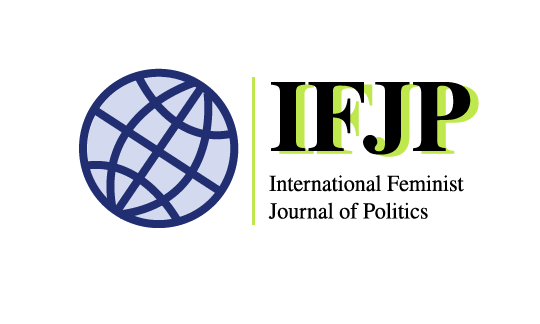Has Canada's Global Maternal Health Moment Come to an End?
By: Candace Johnson (she/her/hers)
Between 2010 and 2015, Canada was a world leader in global maternal health policy, but since then Canada has been shifting its global health commitments from maternal, newborn, and child health (MNCH) to sexual and reproductive health and rights (SRHR). In fact, in terms of Canadian foreign policy and development assistance, the maternal health moment seems to have come to an end. While this is a welcome development for many critics of the MNCH commitments, who dislike the pronatalist, mother-focused emphasis of the policy and view SRHR options as offering a broader, more inclusive agenda, the full story is more complex. My analysis is generated and informed by interviews conducted with NGOs working in Guatemala. The community-level work that is done in these organizations, funded through both sets of initiatives of the Canadian government (MNCH and SRHR), reveal the contradictions and complexities of evolving Canadian commitments and their meanings in practice. Such analysis is the focus of my article, The End of the Maternal Health Moment: An Examination of Canada’s Evolving Global Reproductive Policy Commitments.
I conduct this analysis in the context of two developments, one political and one conceptual. The political development is the Trudeau government’s declaration of a feminist foreign policy. Canada’s Feminist International Assistance Policy (FIAP) was announced in 2017 and has since given shape to numerous policy areas, including global health, development policy, and SRHR. While feminist declarations are important signals that governments are responsive to and respectful of broad interpretations of women’s and sexual and reproductive rights, in this instance the Canadian government’s FIAP has institutionalized a model that focuses mainly on women’s empowerment as a means to economic participation. This suggests that the end of Canada’s maternal health moment, and its replacement with “feminist” SRHR commitments, might not be the victory that gender justice advocates were hoping for. Moreover, the FIAP’s focus on economic growth and workforce participation should raise suspicion that an instrumentalist logic drives SRHR policy goals, rather than a genuinely feminist, gender justice oriented logic.
The conceptual development, which has very real consequences, is the decline in status of the mother in countries of the global north. In other words, in countries like Canada, the United States, Great Britain, Australia, women’s ability to derive any political or cultural status from their roles as mothers, has declined. This also extends to the economic realm, where women are further constrained, in terms of earning ability, by their status as mothers. Taken together, these two developments, the decline in the status of mothers in “the West” and the rise in popularity of global maternal health as a development policy, which gets converted into SRHR policy under FIAP, suggest that global health policies directed at “mothers” are in flux and are being directed not just away from “maternal health” but toward empowerment as a form of economic development.
However, decisions to jettison maternal health policies should be considered carefully. The maternal, as the focus of policy, has a number of advantages: there is a clear focus (the mother/ the pregnant woman), progress is easy to measure (number of maternal deaths/ maternal mortality), and maternal mortality serves as a proxy measure for gender equality in society. In short, focus on maternal health can provide a lot of information and benefit to the population despite problems with its narrowness. Further, SRHR policies, in Canada and elsewhere, hold great potential, yet are also more diffuse, politically fraught, and multiple. It is also the case that the two policy areas are unavoidably overlapping.
My research reveals that, in the programs under consideration in Guatemala, when policy converts from MNCH to SRHR the focus tends to shift to adolescent pregnancy rather than maternal health in general. This is a positive focus, in that rates of adolescent pregnancy in countries like Guatemala and Mexico are high and problematic for many reasons related to health and social inequality. Therefore, attention and resources get redirected to a worthy cause. Yet it is also negative, in that it potentially disrupts established NGO-community relationships and exchanges well understood policy subjects and subjectivities with more ambiguous ones. In any case, SRHR policies should be pursued with greater strategic purpose and, as is the case in other contexts, in concert with maternal health policies. This will, hopefully, serve the interests of gender justice in ways that will also respond to local contexts and cultural frames.
Read the full article here: The End of the Maternal Health Moment: An Examination of Canada’s Evolving Global Reproductive Policy Commitments
Each blog post gives the views of the individual author(s) based on their published IFJP article. All posts published on ifjpglobal.org remain the intellectual property and copyright of the author or authors.
Candace Johnson is a Professor in the Political Science Department at the University of Guelph. She has conducted research with communities in Mexico, Guatemala, Honduras, Cuba, the United States, and Canada, and has published widely on topics related to gender and politics, reproductive rights, maternal health, human rights, and Latin American Politics. She is co-editor (with Stephen Henighan) of Human and Environmental Justice in Guatemala, and author of Maternal Transition: A North-South Politics of Pregnancy and Childbirth, and Health Care, Entitlement, and Citizenship, and has published numerous journal articles.



